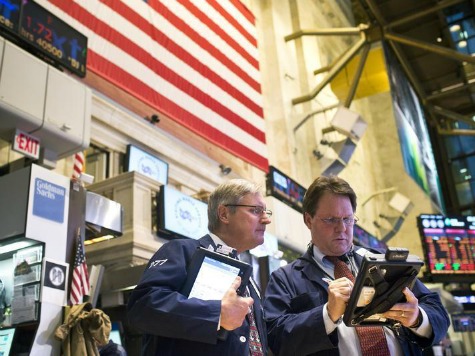The Labor Department announced the economy added 195,000 jobs in June. The pace appears to be picking up, but it is still not the 360,000 jobs needed each month to bring unemployment down to 6 percent over the next three years.
The jobless rate ticked up to 7.6 percent as the percentage of adults looking for work increased.
Adding in discouraged adults and part-timers who want full-time jobs, the unemployment rate becomes 14.3 percent. And, for many years, inflation-adjusted wages have been falling and income inequality rising–this remains a buyers’ market.
Sluggish growth is the culprit. The Bush expansion delivered only 2.1 percent annual GDP growth. That’s about the same for the Obama recovery after 45 months.
Now, defense cutbacks negotiated with Congress during President Obama’s first term have subtracted some $62 billion from federal spending since last fall. An additional $42 billion in sequestration cuts and $200 billion in higher taxes are further reducing consumer outlays and government spending in the second and third quarters.
Last week’s news that imports from China are soaring again while exports decline is causing economists, even at the ever-optimistic Wall Street banks, to downgrade estimates for second quarter growth to well less than 2 percent, and dampening prospects for a more robust recovery in the second half.
Unless President Obama acts more aggressively to resolve trade issues with China, quits undermining Federal Reserve Chairman Bernanke, and sends markets a clear signal his choice for the next Fed Chief will be focused on a moderate well-trained steward and not an ideological operative, the prospects for 2014 will be equally dim.
Stronger growth is possible. Forty-five months into the Reagan recovery, after a deeper recession than Obama inherited, GDP was advancing at a 5 percent annual pace, and job creation was quite robust–nowadays, that pace would bring unemployment down to 5 percent pretty quickly.
More rapid growth requires importing less and exporting more; dealing with the $500 billion trade deficit on oil by drilling more offshore and in Alaska; and dealing with China by addressing its undervalued currency and protectionism.
It also requires sound stewardship at the Fed–not a leader bent on inflating the country out of its problems, which is a fool’s journey anyway, or with a record of support for hard left causes aligned with those hostile to economic growth and entrepreneurship.
Overall the president must cultivate a climate more receptive to the genuine concerns of businesses, instead of treating its leaders as likely recidivists to a white collar prison for those guilty of environmental crimes against the people.
Absolutely essential is right-sizing business regulations to make investing in new jobs less expensive and time consuming. Regulatory enforcement is needed to protect the environment, consumers and financial stability, but those must be delivered cost effectively and quickly to add genuine value.
Overall, more jobs require trimming back on tax increases and spending cuts, and more pro-growth trade, energy and regulatory policies.
Peter Morici is an economist and professor at the Smith School of Business, University of Maryland, and widely published columnist. Twitter: @pmorici1

COMMENTS
Please let us know if you're having issues with commenting.